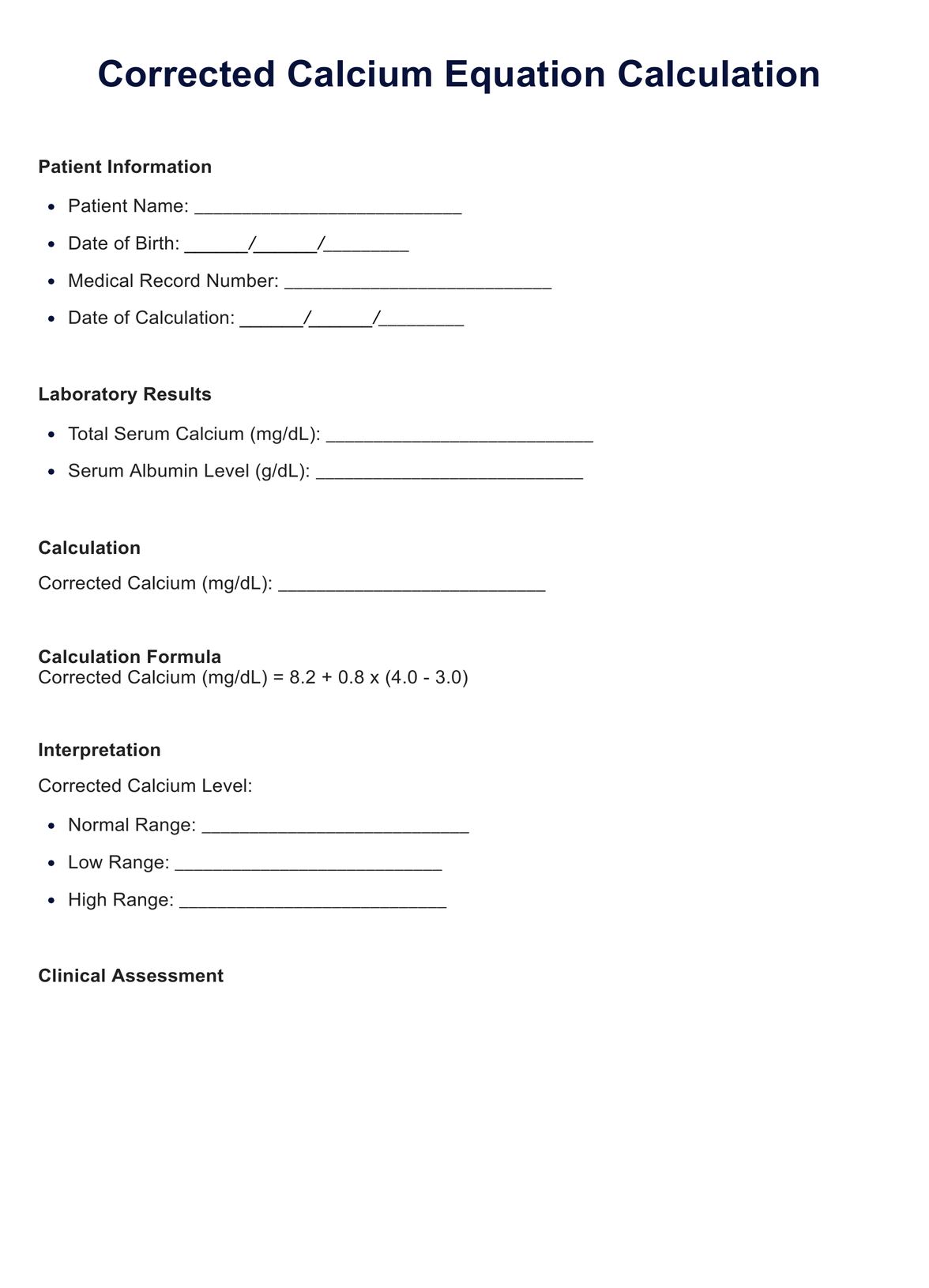Healthcare professionals, including doctors, nurses, and clinical laboratory staff, typically request Corrected Calcium Equations.

Accurate patient assessments with Corrected Calcium Equation. Ensure precise calcium status evaluation in healthcare practice.
Healthcare professionals, including doctors, nurses, and clinical laboratory staff, typically request Corrected Calcium Equations.
Corrected Calcium Equations are used when there are concerns about calcium imbalances, hypoalbuminemia, or nutritional assessments in patients.
Corrected Calcium Equations are used by inputting a patient's total serum calcium and serum albumin levels into a formula to calculate an adjusted calcium value.
EHR and practice management software
*No credit card required
Free
$0/usd
Unlimited clients
Telehealth
1GB of storage
Client portal text
Automated billing and online payments